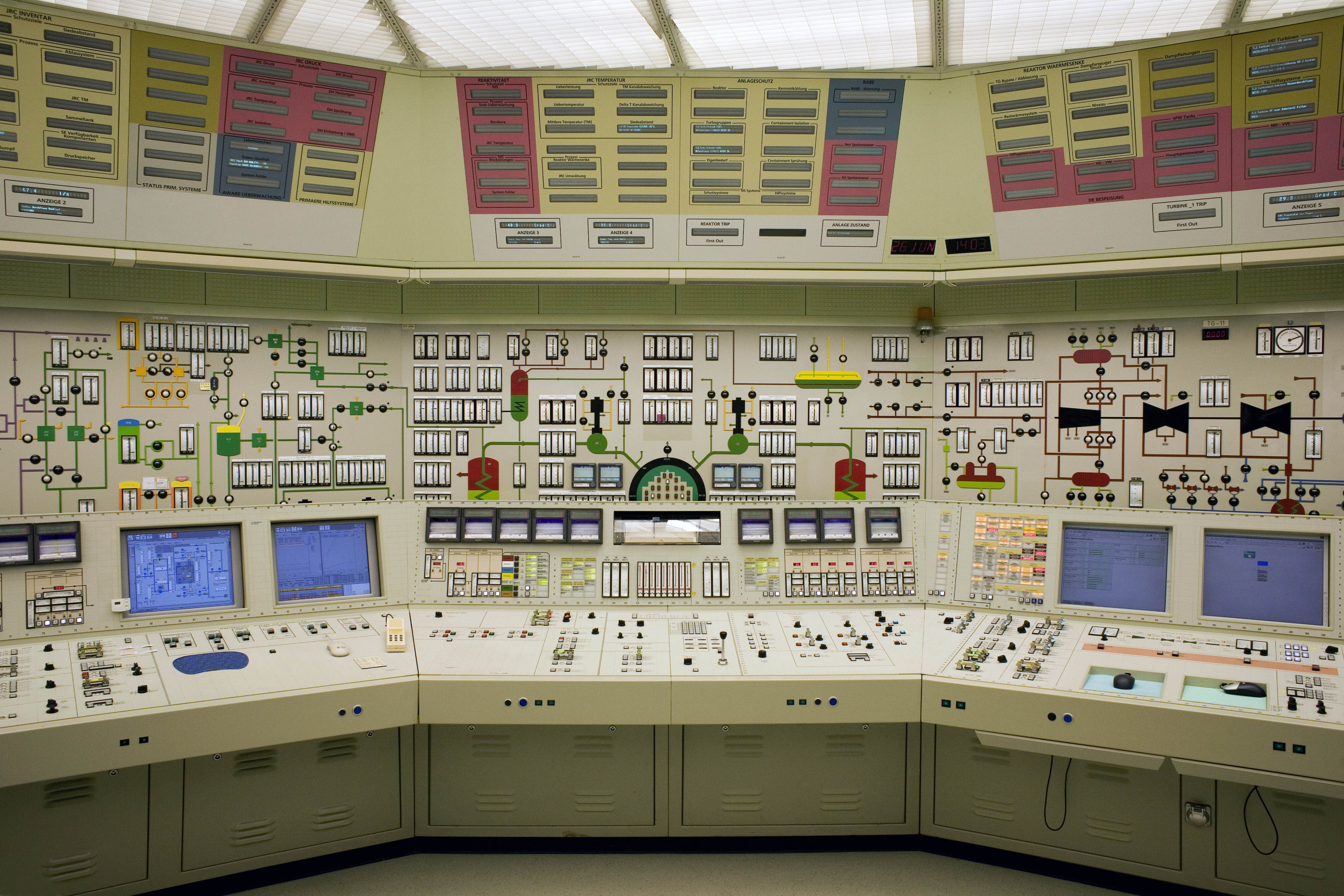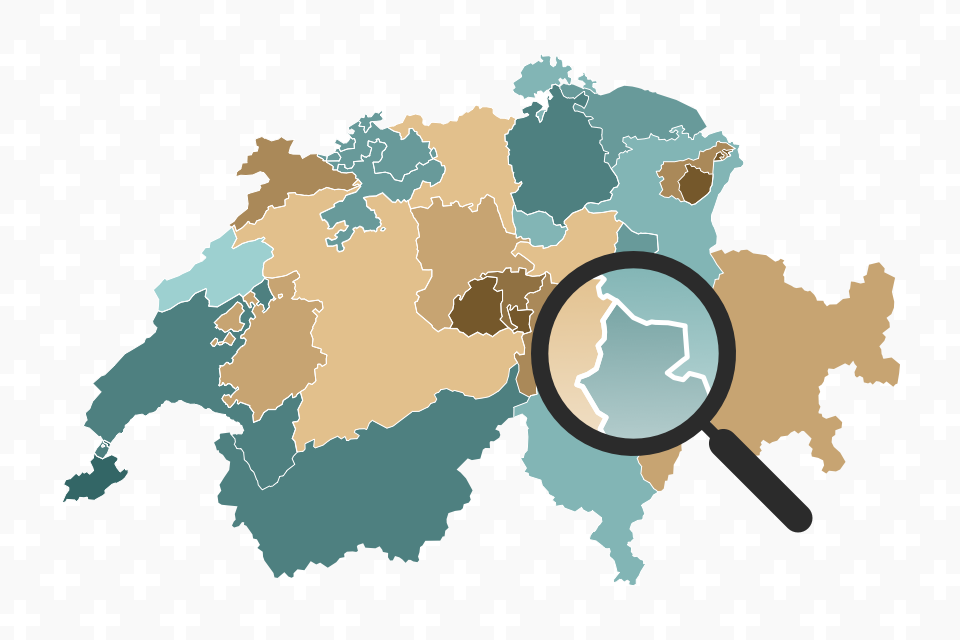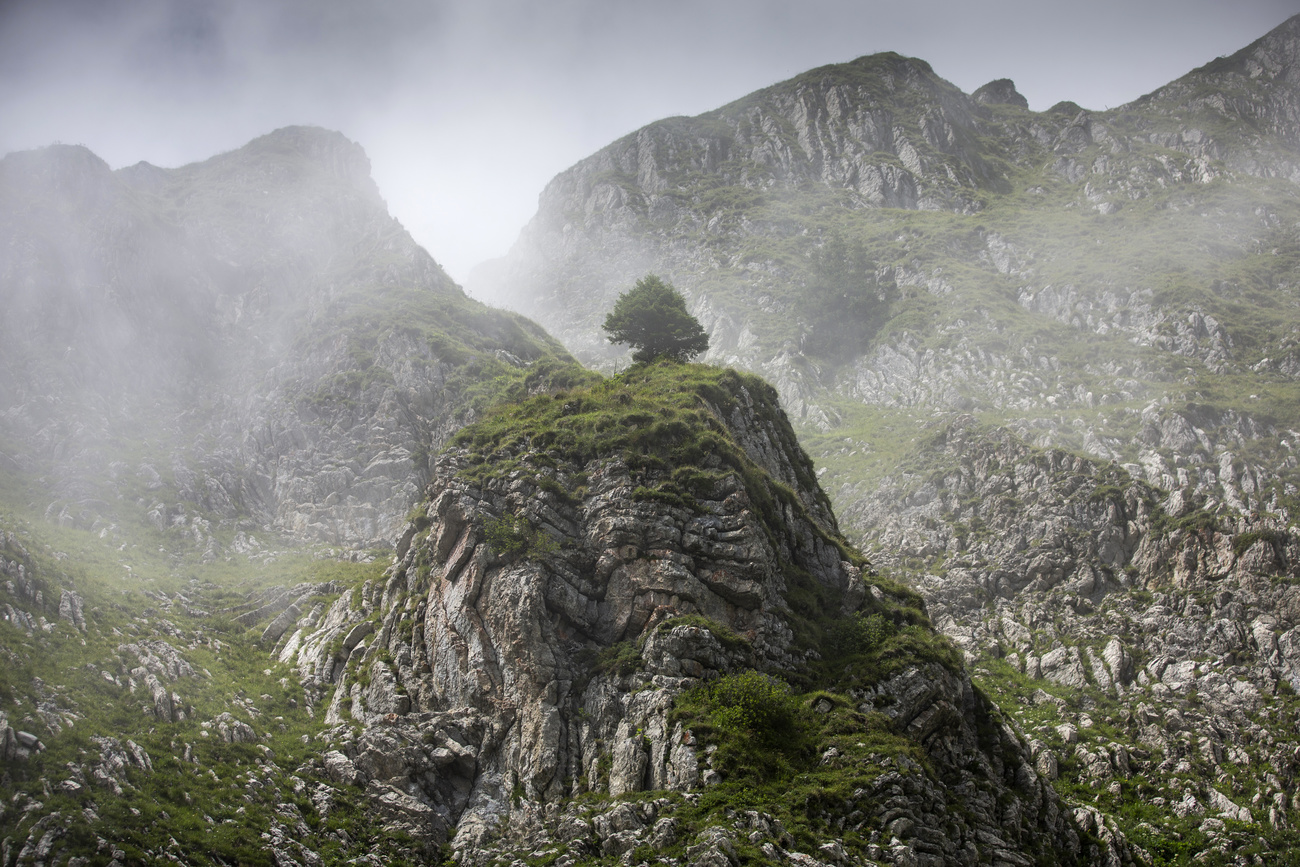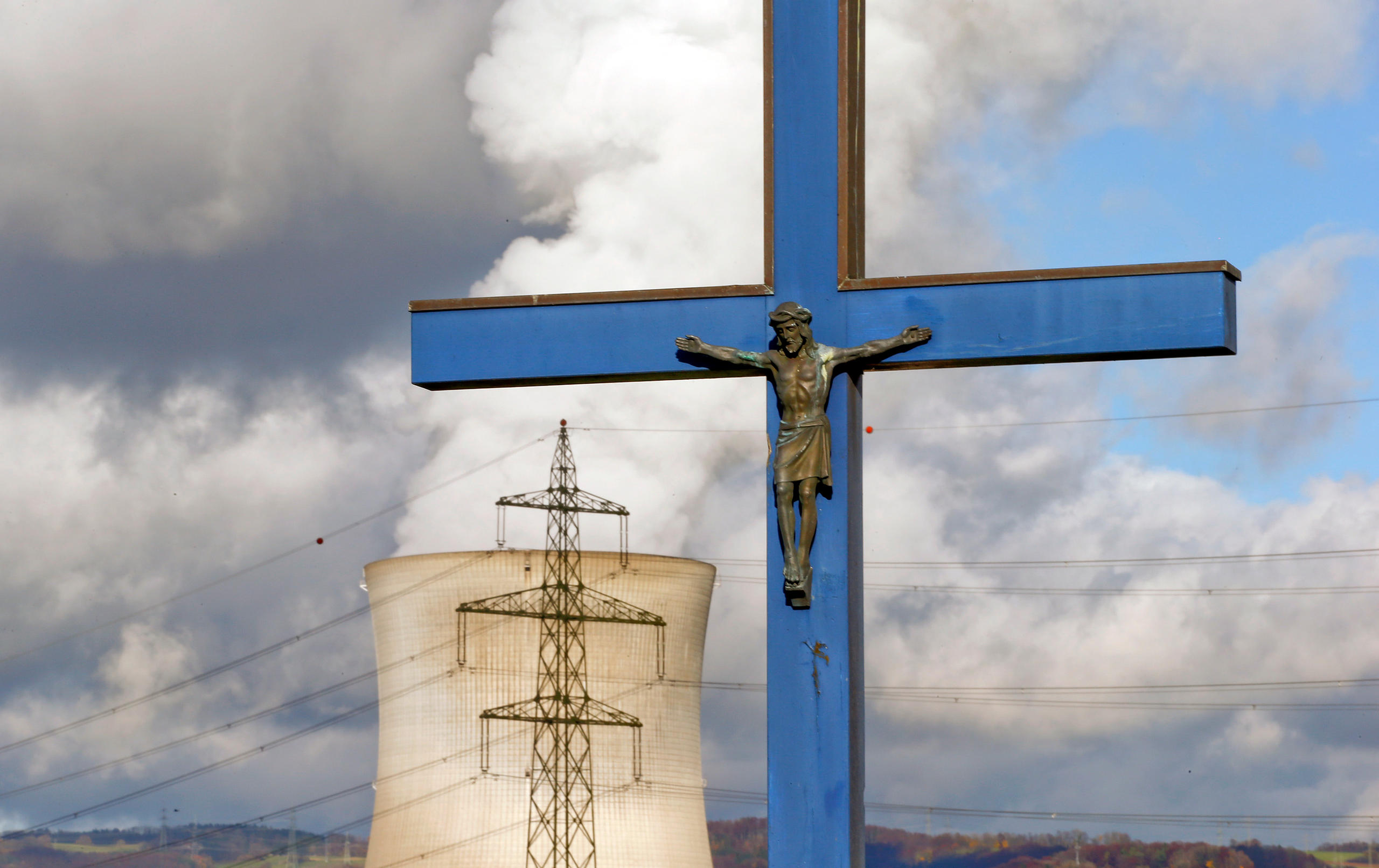Have Switzerland’s nuclear reactors become too old and dangerous?

Fears that age-related issues could trigger a nuclear disaster are likely unwarranted, the evidence suggests.
The Green Party and other advocates of a popular initiative for a planned phase-out of nuclear power say the advanced age of Swiss reactors, among the oldest in the world, greatly increasesExternal link the risk of a major nuclear accident. Such an event, they add, would have devastating consequences on a country as densely populated as Switzerland.
But do Swiss voters really have a reason to fear a disaster purely based on the age of the reactors? The evidence suggests they don’t. That’s because many other factors come into play when considering the risk of a major accident.
Serious accidents are rare
The World Nuclear AssociationExternal link maintains that commercial nuclear power generation is “extremely safe” and the “risk of accidents in nuclear power plants is low and declining”.
“In over 16,000 cumulative reactor-years of commercial operation in 32 countries, there have been only three major accidents to nuclear power plants,” the Association declares on its website.
A 2010 study by the OECD Nuclear Energy AgencyExternal link looking at real accident data from full energy chains likewise concluded that “nuclear power generation presents a very low risk in comparison to the use of fossil fuels”. The highest number of fatalities has occurred in the coal sector. The World Nuclear Association says this is due in part to the hazards associated with the large amounts of materials that must be mined and transported to supply power stations.

But a more recent studyExternal link by the federal technology institute ETH Zurich and the University of Sussex examining over 200 nuclear incidents says the risks may be underestimated. The researchers believe a nuclear meltdown is “more likely than not” to occur every 10 to 20 years. They call existing data from the nuclear industry “flawed and woefully incomplete” and say the current International Nuclear Event Scale for rating accidents needs to change to better understand the risks.
Whether a full and exact picture of the hazards can ever be achieved is unclear. According to the journal NatureExternal link, nuclear experts say that “an objective ‘danger’ ranking is almost impossible because each reactor has its own unique risk profile, and some risks are simply unknowable.”
Where experts do agree is that many factors need to be considered. Age is just one of them. And in fact, Nature states, “older reactors are not necessarily more dangerous than newer ones”.
Among the three major accidents, the journal observes, two involved relatively new reactors: Three Mile Island in the United States had been in service for three months at the time of the 1978 meltdown and Chernobyl for two years when disaster struck in 1986. In 2011, a tsunami cut power supplyExternal link and cooling in three older reactors at Fukushima, triggering a nuclear accident. Age itself was not a direct cause.
Other factors, such as the size of the plants, their design, and external threats like an earthquake, can all affect the level of risk. But, according to Nature, experts believe that “the largest single internal factor determining the safety of a plant is the culture of security among regulators, operators and the workforce”.
Reviews and upgrades
Inspectors, says the World Nuclear Association, play a central role in ensuring safety. With age, nuclear reactors are prone to deterioration or defect, so older facilities undergo significant upgradesExternal link as well as periodic reviews in accordance with the International Atomic Energy Agency (IAEA) convention on nuclear safety. On a regional level, Switzerland and EU countries plan to submit national reports on managing ageing of their nuclear installations for peer reviewExternal link in 2017.
Nationally the Swiss Federal Nuclear Safety Inspectorate (ENSI)External link supervises the operation of the five nuclear facilities over their entire lifespan. Beznau I in canton Aargau is currently closed after small cracks in the containment structure were uncovered (Leibstadt, operational since 1984, is also closed for safety reasons). If ageing problems become too great, regulations stipulate that a facility must be decommissioned.
From 40 to 60 to 80 years
The fact that many nuclear reactors around the world are ageing is driving more knowledge sharing and research into their safetyExternal link. Worldwide, a total of 18 operational reactors are 45 or older, according to the International Atomic Energy AgencyExternal link. This includes five reactors outside Switzerland that are as old as Beznau I (47). One of them is located in the USExternal link where, by December 2015, the Nuclear Regulatory Commission (NRC) had approved a 20-year renewal of operating licencesExternal link, which typically run for 40 years, for 81 of the 99 commercial reactors in operation. Before deciding on a renewal, the NRC undertakes a review of the facility to see if it can continue to operate safely for two more decades.
| OLDEST REACTORS IN OPERATION (at December 2015) | |
| Switzerland – Beznau 1 | 1969 |
| United States – Nine Mile Point 1 | 1969 |
| United States – Point Beach 1 | 1970 |
| United States – Dresden 2 | 1970 |
| United States – Robinson 2 | 1970 |
| Switzerland – Mühleberg | 1971 |
| Switzerland – Beznau 2 | 1971 |
| Russia – Novovoronezh 3 | 1971 |
| Sweden – Oskarshamn 1 | 1971 |
| Canada – Pickering 1 | 1971 |
| Pakistan – Kanupp | 1971 |
| United States – Dresden 3 | 1971 |
| United States – Monticello | 1971 |
| United States – Palisades | 1971 |
| Source: IAEA |
As talk emerges of extending the life of nuclear reactors in the US to 80 years, research into ageing and safety is intensifying, reportsExternal link Nature. This includes studies to identify defects before they become a problem, ongoing experiments that simulate 80 years of activity inside a reactor in order to project degradation, and efforts to share this knowledge with regulators worldwide.
But again, doubts remain among some experts about the ability of researchers to know all the potential risks. A former NRC chair told Nature that parts which inspectors cannot see, such as underground power cables, could be a cause for concern.
The verdict
To suggest that nuclear reactors run a higher risk of a major accident simply because of their age is simplistic: age is just one factor among many that affect overall safety. Older reactors inevitably experience wear and tear, but measures are in place to ensure upgrades and checks, and research aimed at increasing their safety is ongoing.

In compliance with the JTI standards
More: SWI swissinfo.ch certified by the Journalism Trust Initiative











You can find an overview of ongoing debates with our journalists here . Please join us!
If you want to start a conversation about a topic raised in this article or want to report factual errors, email us at english@swissinfo.ch.